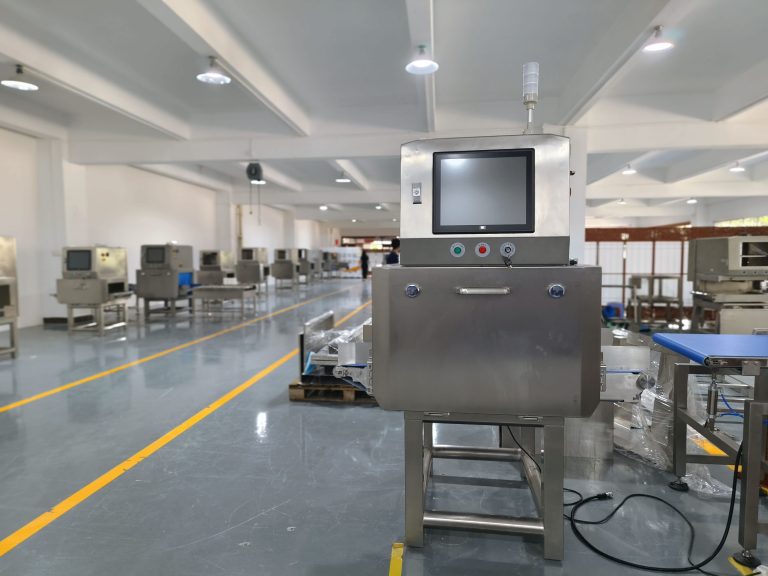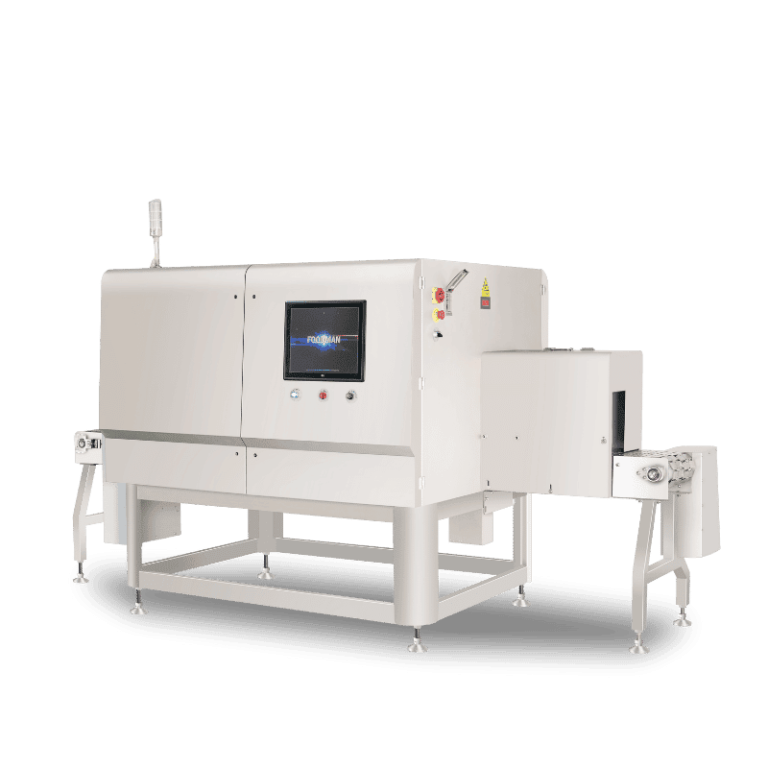Introduction
Food quality and safety are essential to protecting consumer health and upholding brand reputation in today’s highly regulated industry. To meet these standards, food processors rely on advanced x-ray inspection systems. X-ray inspection plays a critical role in identifying and removing hazards, ensuring that only safe, high-quality products reach consumers, and helping companies maintain compliance with food safety regulations.
About the Basic Logic of Food X-ray Inspection System
The Necessity of Food Safety
Food safety is essential for protecting public health and building consumer trust. In today’s global food industry, ensuring safe products is critical to preventing contamination, reducing health risks, and maintaining high quality standards.
Technology offers advanced tools like x-ray inspection to detect contaminants and prevent risks. These innovations help ensure that only safe, high-quality products reach consumers, supporting regulatory compliance and strengthening consumer confidence.

Principle of X-ray Inspection System
The fundamental principle of food X-ray inspection relies on the use of high-energy X-rays to penetrate food products. As X-rays pass through, different materials absorb varying amounts of radiation based on their density. This allows the system to identify and detect foreign objects, such as metal, bone, glass, and other contaminants, which appear as distinct images on the X-ray detector, ensuring food safety and quality.
Types of X-ray Inspection System
The food industry offers a variety of X-ray inspection systems, each tailored to meet specific inspection needs. These systems vary depending on the product type, such as systems designed for unpackaged bulk products versus those for packaged items. Additionally, there are both dual-beam and single-beam side-scan X-ray inspection systems available, each offering unique advantages. Choosing the right system depends on the specific characteristics of the product being inspected.

The Power of Food X-ray Inspection Equipment
Food X-ray inspection technology represents a significant advancement in ensuring food safety and quality. This state-of-the-art system offers numerous benefits, primarily its ability to detect contaminants with high precision, without damaging the product. It is capable of identifying a wide range of foreign objects, including metal, glass, plastic, and even small bone fragments, which might otherwise go unnoticed. The system enhances food safety by quickly pinpointing potential hazards in packaged or bulk food products, helping manufacturers maintain stringent quality control. By providing reliable, non-invasive detection, food X-ray inspection systems play a vital role in protecting consumers and upholding brand integrity.
Food X-ray Inspection and HACCP
Ensuring Quality with Food X-ray Inspection
The primary function of X-ray inspection in food production is to detect foreign contaminants, particularly metals like iron, non-ferrous metals, and stainless steel, as well as non-metals such as bones, glass, ceramics, stones, sand, rigid plastics, and desiccants. These contaminants pose significant health risks to consumers. X-ray inspection systems are widely used to screen a range of products, including snacks, coffee, pharmaceuticals, and more. By employing X-ray inspection, manufacturers can maintain product quality and safety.
Contamination can occur at any stage of food production, from processing to packaging. As such, X-ray inspection systems are vital in mitigating health risks and ensuring that only safe products reach consumers.
A Guide to HACCP Principles
HACCP (Hazard Analysis and Critical Control Points) is a systematic approach to food safety that focuses on identifying, evaluating, and controlling potential hazards during food production. It is a preventive strategy designed to ensure that food products are safe for consumption by addressing biological, chemical, and physical risks at every stage of the production process.
How X-ray Inspection Integrates with HACCP Principles
The X-ray inspection system integrates effectively with HACCP principles by offering an extra level of control and validation. It assists food manufacturers in fulfilling the rigorous standards of HACCP, ensuring adherence to food safety regulations and enhancing overall product safety.
The Effect on Consumer Assurance
Fostering Consumer Loyalty to Food Brands
Our advanced X-ray Inspection System serves as a reliable protector, ensuring your brand’s reputation is upheld by consistently delivering top-notch product quality. Build stronger consumer relationships with ease as our system reinforces your dedication to providing safe, high-quality products, cultivating long-term trust and loyalty.
Enhancing Consumer Trust Through Transparency
As consumers increasingly demand transparency in food production, brands that invest in cutting-edge technologies like X-ray food inspection showcase their dedication to openness, which in turn positively impacts consumer perception.
Minimizing Product Recalls with X-ray Inspection
Product recalls can have significant financial and reputational consequences. The X-ray inspection system helps prevent the release of contaminated products, effectively reducing the risk of recalls and saving companies valuable time and resources.
Addressing Safety and Radiation Concerns
Overview of X-ray Radiation
X-ray radiation is used in food inspection to detect contaminants. The radiation levels are strictly controlled and well below harmful thresholds, ensuring safety. Regulatory bodies like the FDA and European Commission enforce guidelines to minimize health risks, making X-ray inspection a safe and effective method for food safety.
Safety Protocols and Compliance
Our advanced X-ray Inspection System for packaged goods is designed to meet the highest safety standards, ensuring reliability and security. Operators are provided with specialized training to handle the system safely, minimizing any potential risks. Easyweigh follows strict regulatory guidelines, prioritizing the safety of all involved. Our system is built to comply with industry safety protocols, ensuring optimal protection.
Challenges and Constraints
Cost Implications
While X-ray inspection systems offer numerous benefits, their initial cost can be a barrier for some businesses. However, the long-term savings, efficiency improvements, and reduced risk typically make the investment worthwhile.
Addressing Technical Limitations
Certain packaging types or highly dense products may present challenges for X-ray inspection systems. Nevertheless, continuous technological advancements are helping to overcome these limitations, improving the effectiveness of these systems.
Conclusion
Food X-ray Inspection is a transformative technology in the food industry. It plays a crucial role in detecting contaminants, ensuring regulatory compliance, and fostering consumer trust, making it an indispensable tool for businesses committed to food safety. Adopting this technology not only ensures compliance with regulations but also enhances food safety, delivering more reliable and secure products to consumers.



